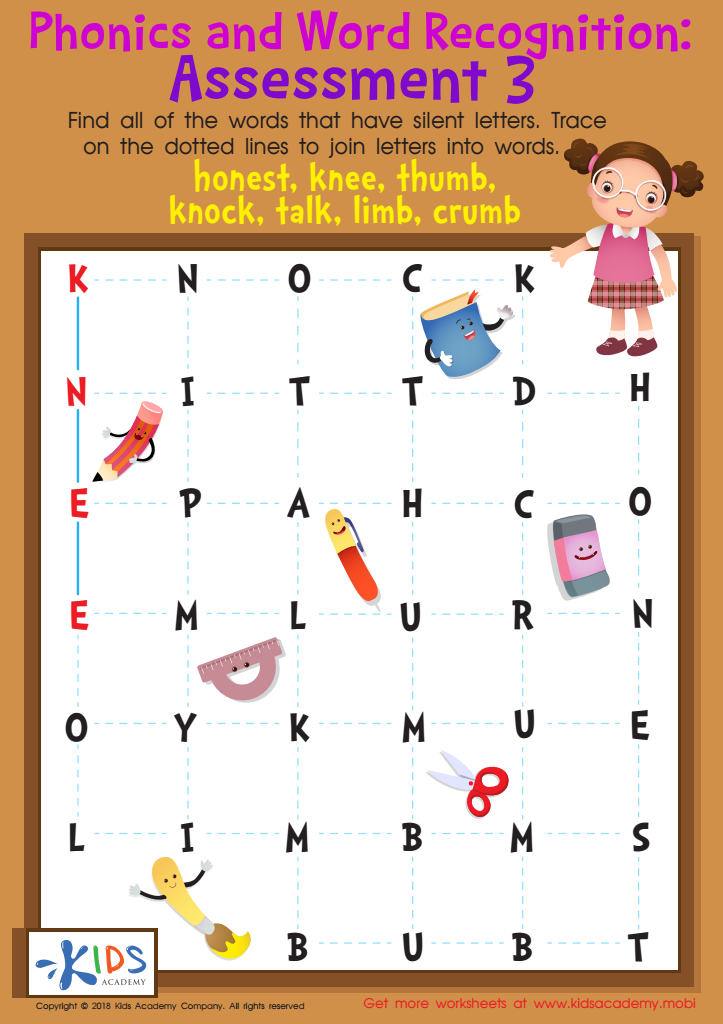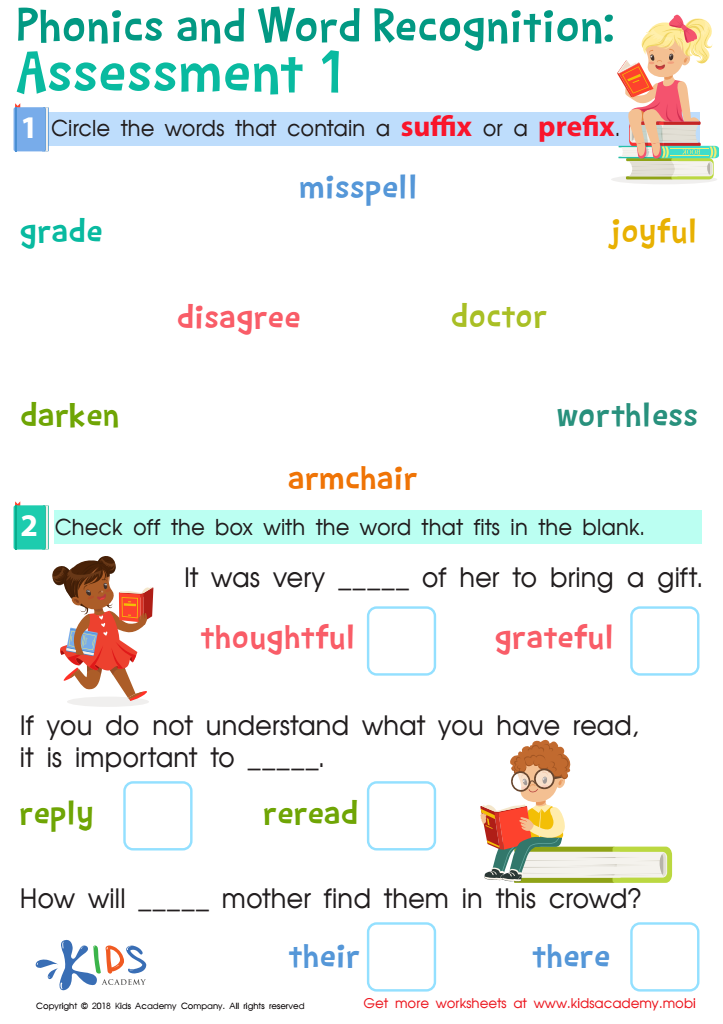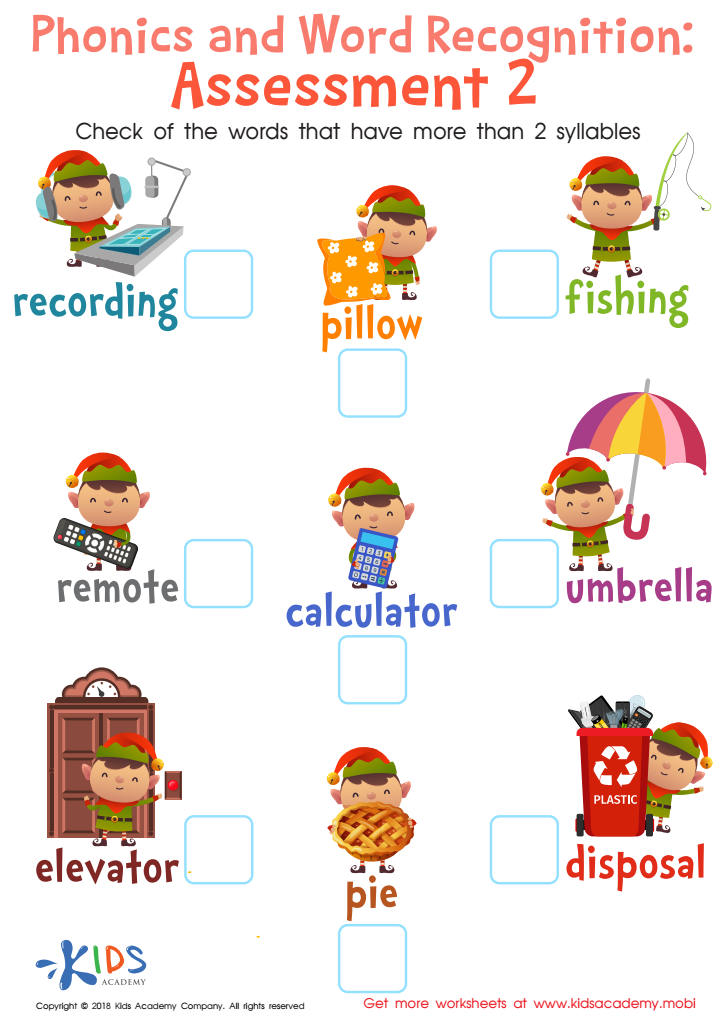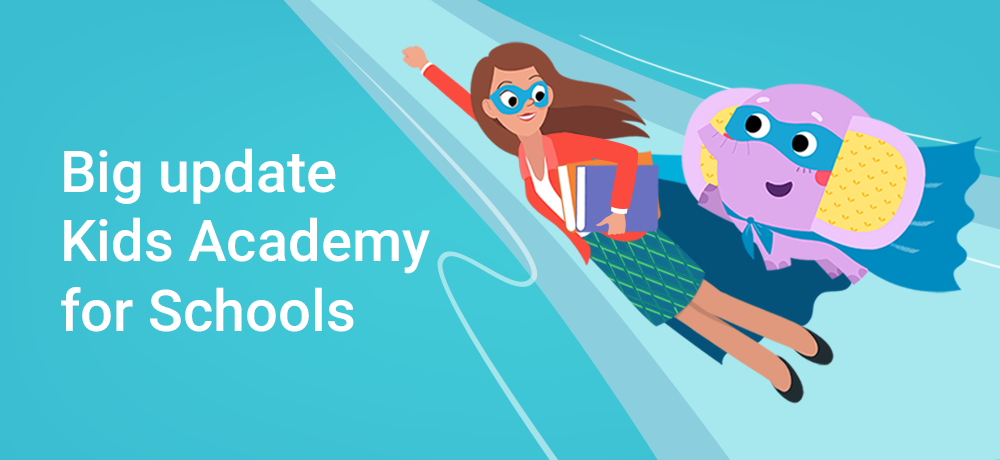Normal Phonics worksheets activities for Ages 8-9
3 filtered results
-
From - To


Phonics and Word Recognition: Assessment 3 Worksheet


Phonics and Word Recognition: Assessment 1 Worksheet


Phonics and Word Recognition: Assessment 2 Worksheet
Normal Phonics worksheets activities stand as a cornerstone in the foundation of a child's reading and writing skills. These structured forms of learning play a pivotal role in breaking down the complexities of the English language into understandable and manageable chunks for young learners. Through these activities, children are introduced to the relationship between letters and sounds, paving the way for fluent reading and clear articulation.
One of the primary reasons Normal Phonics worksheets activities are incredibly useful is their ability to cater to a wide range of learning styles. Whether a child is a visual learner, preferring to see the letters and the sounds they correspond with, or a kinesthetic learner, enjoying the process of writing down the letters and words, Phonics worksheets offer something for everyone. This inclusivity ensures that every child has the opportunity to grasp the basics of reading and writing in a way that resonates with them personally.
Moreover, Normal Phonics worksheets activities reinforce learning through repetition and practice. This consistent exposure to phonetic concepts allows children to internalize the sounds of letters and letter combinations, which is essential for reading fluency and comprehension. By gradually increasing the complexity of the tasks, these worksheets support learners at every stage of their phonics education, from understanding simple vowel sounds to tackling more challenging digraphs and diphthongs.
Another significant advantage of Phonics worksheets is the way they encourage independent learning. Children can work at their own pace, revisiting concepts as needed until they feel confident in their understanding. This autonomy not only enhances their learning experience but also builds self-esteem and motivation.
In conclusion, Normal Phonics worksheets activities are an invaluable tool in the early education landscape. They demystify the process of learning to read and write by providing structured, accessible, and engaging ways for children to explore the sounds of the English language. Through these activities, learners are equipped with the foundational skills necessary for academic success and a lifelong love of reading.
 Assign to My Students
Assign to My Students






.jpg)









